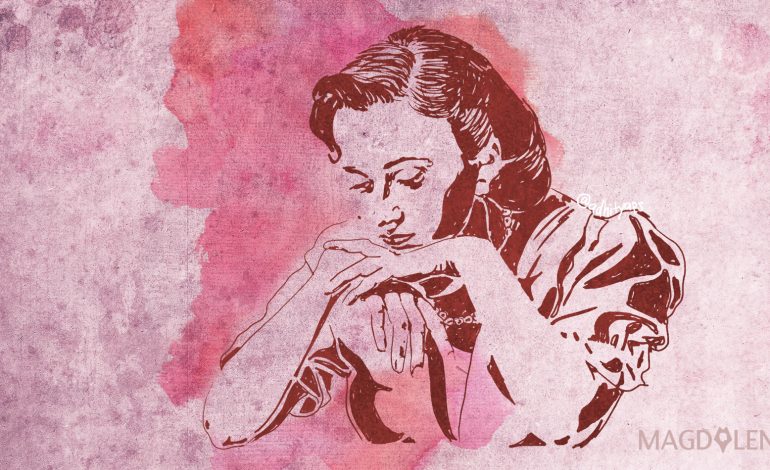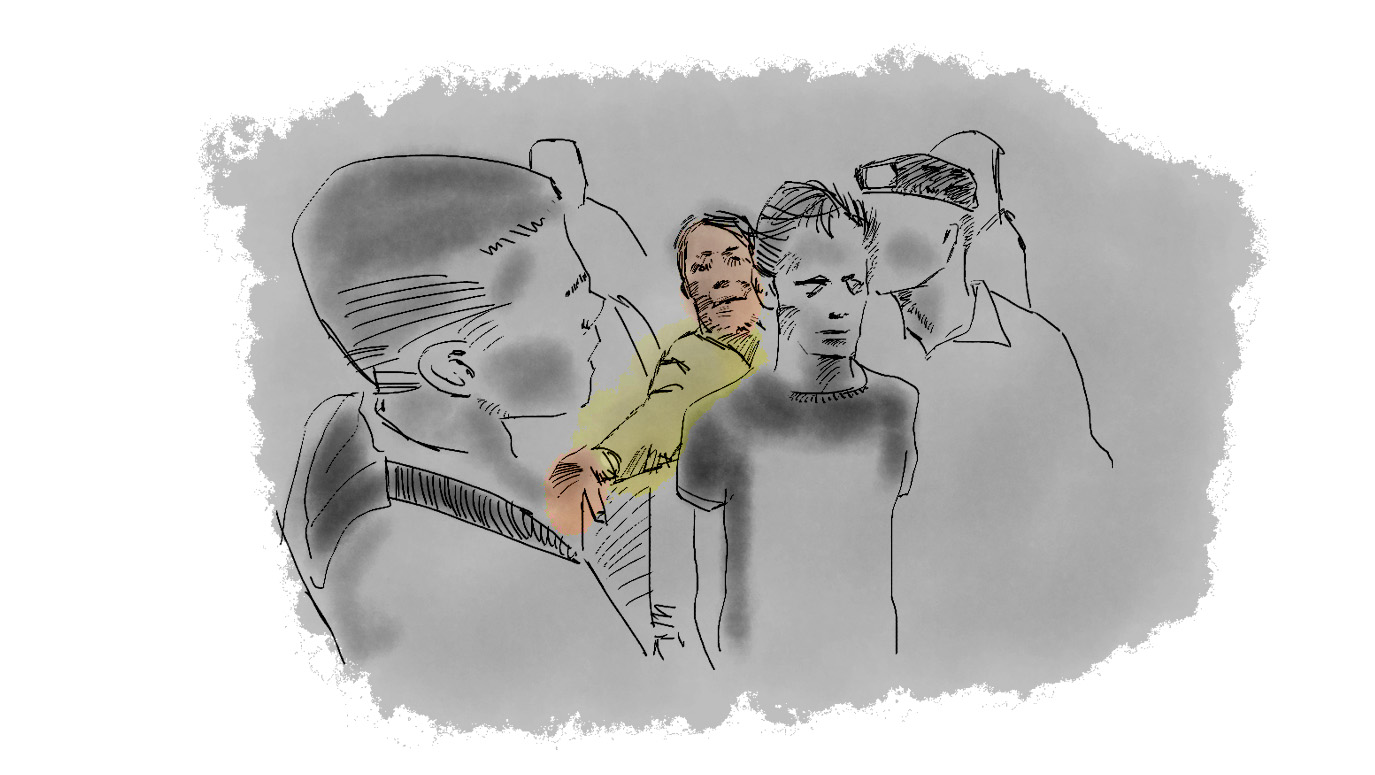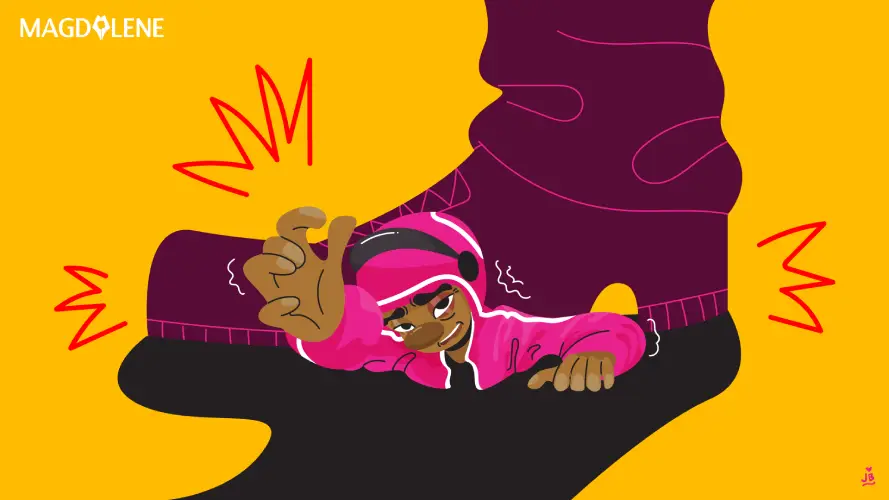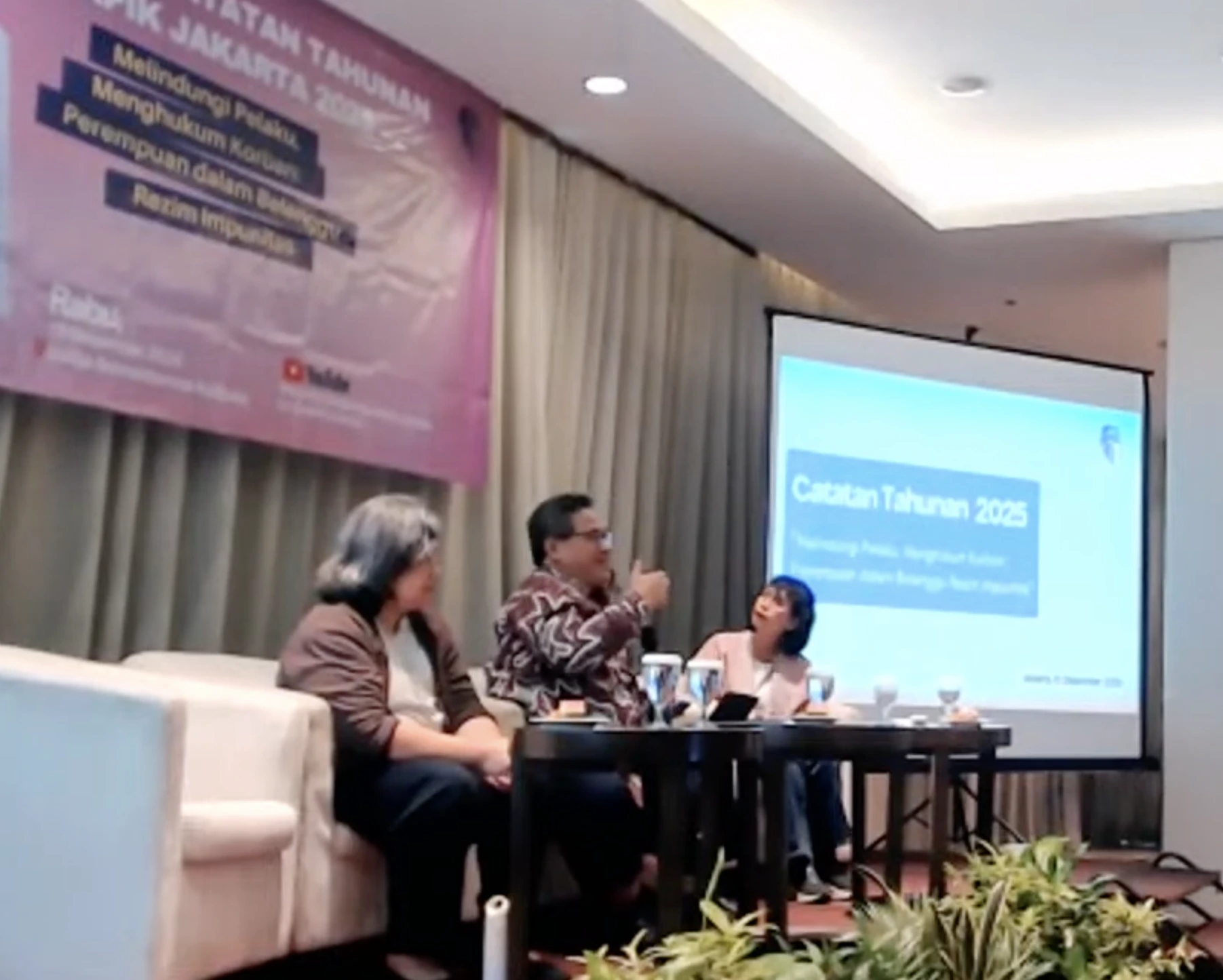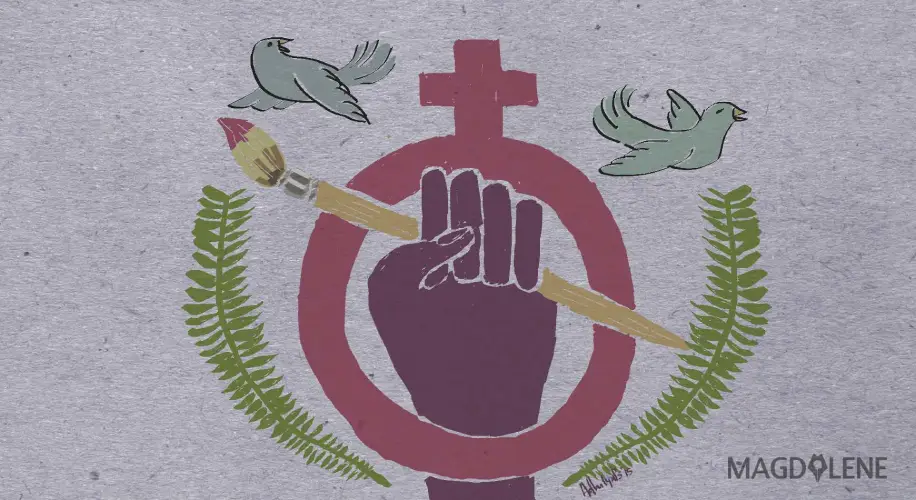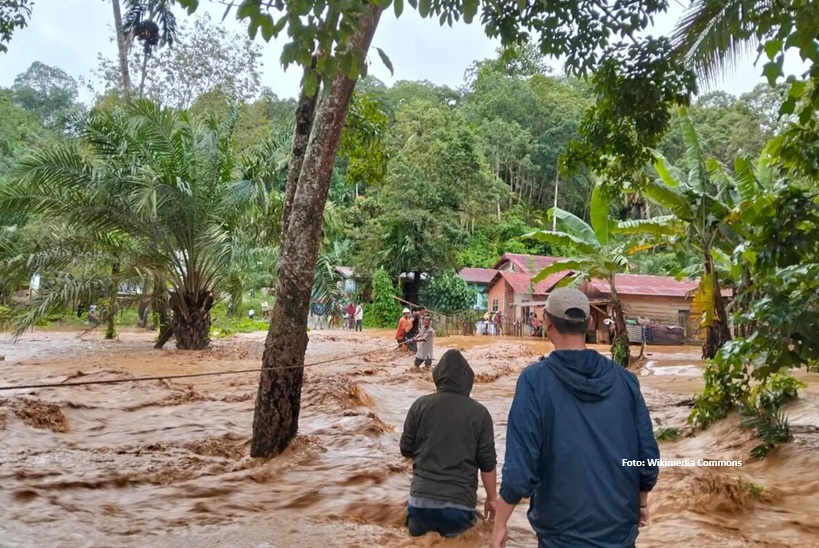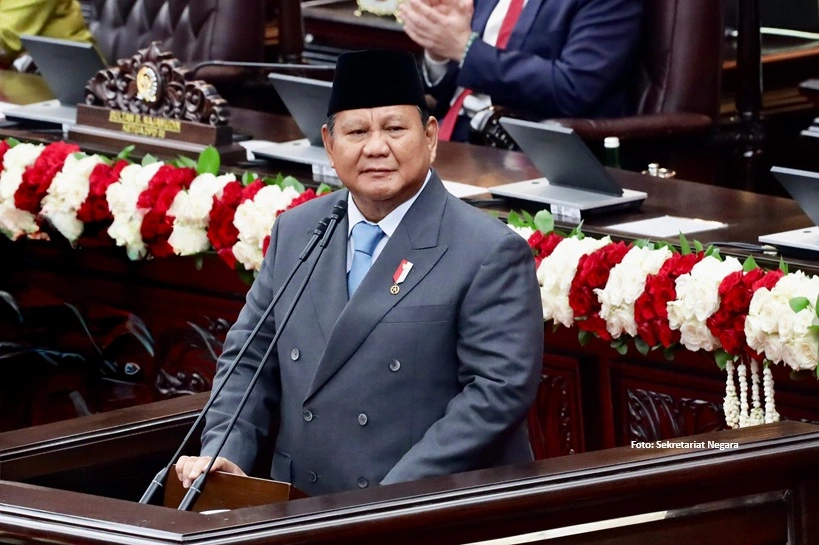Debunking LGBT Myths and Why Policing Homosexuality is a Joke
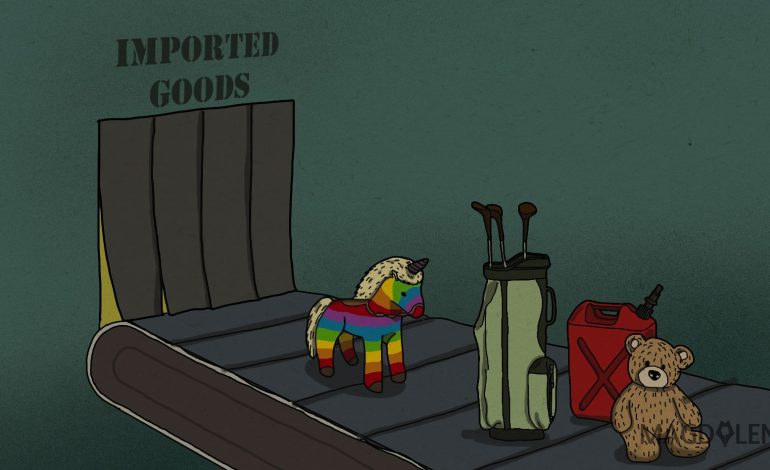
The national meltdown over Lesbian, Gay, Bisexual, and Transgender (LGBT) Indonesians unfortunately continues. It is now entering the second stage in which criminalization is considered a primary solution to protect the moral fiber of Indonesian youth, and to protect national security against the infiltration of foreign values.
A group of academics and activists of the Family Love Alliance (Aliansi Cinta Keluarga/AILA) is requesting the Constitutional Court to annul some articles in the Indonesian Criminal Code (KUHP) – in order to criminalize sexual practices between adult homosexuals. Having seen that the Alliance has constitutional grounds, the Court has held five hearings in which the experts and protesters were presented during the sessions to spell out their positions pertaining to LGBT issues.
In the last hearing dated Aug. 1, 2016, in addition to the old assumption that homosexuality is contagious and sinful, the group argued that LGBT individuals—particularly gay men and female-to-male transgender (waria)— could trigger a significant increase in HIV infections in the country. They credited various sources, and argued that homosexuality was “contagious.” They also blamed gay men as the sole cause of a rise in HIV/AIDS infections.
I want to address four main arguments that they presented in the last hearing, specifically the following:
1. Besides HIV infections, gay sexual relationships have allegedly given birth to new disease called Kaposi Sarcoma
2. An individual can allegedly be ‘gay’ after experiencing anal sex pleasure, and it is difficult to convert him back to becoming heterosexual
3. The destruction of Sodom by God had something to do with LGBT
4. Although the protesters did not mean to criminalize LGBT people, they urged the government to have a clear and official stance on it to protect Indonesians.
Origin of HIV
In the early 1980s, in the U.S., HIV and AIDS were associated with gay sex, and was even dubbed as “GRID – Gay Related Immune Deficiency”. In 1981, the U.S. Center for Disease and Control (CDC) found cases of a rare lung infection in five young, healthy gay men in Los Angeles, which was followed with other signs that their immune system was not working.
In a New York Times article dated May 11, 1982, Lawrence K. Altman wrote that this serious disorder of the immune system known to doctors for less than a year, had so far afflicted around 335 people and killed 136. It was later dipped the ‘HIV/AIDS epidemic’.
Despite the name change however, the fact that it was found among American gay men for the first time did not change the assumption that the virus originated from male homosexuals. In recent research using the earliest known sample of the virus, scientists has constructed a ‘family-tree’ to track down the origin and evolution of the virus.
Due to its mutation rate, the virus evolution is particularly rapid and once it infects new individuals, it diversifies. However, in 1999, Simian Immunodeficiency Viruses (SIV) found in a chimpanzee, according to scientists, was almost identical to HIV in humans. This discovery then led to another question on how the virus was transmitted to humans.
Studies have since revealed that the first transmission of SIV to HIV in humans occurred around the 1920s in Kinshasa, in the Democratic Republic of Congo.
It is surprising that the protesters did not really examine the report on HIV and AIDS released by the Ministry of Health. The report by the Data and Information Center of Health Ministry highlights ‘unsafe heterosexual practices’ as the dominant medium of HIV transmissions from 2010-2014.
HIV itself in Indonesia was first reported in Indonesia among drug users in 2000 (SBS 2016).

Secondly, Kaposi Sarcoma (KS) is obviously not a new illness because of gay sexual practices. Generally, it is a type of cancer that usually appears as tumors on the skin, mucous membranes, lymph nodes, or other parts of the body.
According to the National Cancer Institute in the US, There are different types of KS, such as:
- Classic KS found most often in older men of Italian or Eastern European Jewish origin
- African KS commonly found in young adult males who live near the equator in Africa
- Immunosuppressive Therapy–related Kaposi Sarcoma, an associated condition in any immuno-compromised patients, such as transplant recipients who are taking immuno-suppressant medications
- Epidemic KS which occurs in patients with AIDS
- Non-epidemic gay-related Kaposi Sarcoma which is very rare
Third, one of the protesters argued that anal sex pleasure will convert an individual to be gay and hence, it is difficult to convert him ‘back’ to heterosexual.
This claim neglects the common fact of homosexual practices in Islamic Boarding Schools known as pesantren, in which the men involved do not label themselves as ‘gay’. Handsome younger santri (student) or mairil, for example, will become target of senior santri or warok
Yet in these cases, homosexual practices are used to bolster their strength and masculinity, as well as to signal power relations between men, between the juniors and seniors.
Similarly, in prison, due to ‘the absence of women’, homosexual practices often occur among male prisoners without labeling themselves as ‘gay’. In her book, Not Gay: Sex Between Straight White Male (2016), Jane Ward shows that biker gangs, fraternity, and military hazing rituals — where the juniors are made to touch each other’s penises and stick fingers up to their fellow anuses — do not automatically change the participants’ identity from heterosexual to be gay.
So now, the difficult question in criminalizing homosexuality is: are they going to criminalize the identity or the sexual practices?
On one hand, gay sex is not always about anal penetration. There is a wide range of sexual practices as in heterosexual couples. For example, nipple-play and mutual masturbation do not require penetration. On the other hand, anal penetration does not exclusively belong to gay men. Plus anal sex between two men does not indicate that they are automatically gay.
Fourth, the destruction of Sodom has nothing to do with LGBT. The term LGBT was mentioned by one of the protesters who is obviously lost in history.
Although male same-sex relationship and practices could easily be found in ancient times, the term homosexuality itself was first coined in 1869 by a Hungarian physician, Dr. Karoly Benkert. The invention of homosexuality marked sexual desires/practices as a personal identity and created a sexualized subject.
Therefore, many scholars have debated about the scapegoating of homosexuals in the destruction of Sodom, since the term homosexuality and LGBT did not even exist when the Holy Book was written.
According to Foucault, sexual desires and practices began to be labeled, named, and pathologized only in the 18th and 19th century when the fields of medicine, psychiatry, and criminal justice increasingly made sex as an object of inquiry, control, and management to regulate the State’s population.
Hence, progressive religious scholars re-interpreted the Holy Text and argued that the destruction of Sodom has nothing to do with homosexuality, but the inhospitality and hostile acts of the people toward outsiders.
‘A joke’
Fifth, Singapore and India also have penal codes criminalizing anal intercourse and ‘gross indecency’ or ‘carnal intercourse against the order of nature’ between males both in public and private sphere (Section 377 and 377A). These penal codes are products of the British colonials that were influenced by English common law, which stems from medieval canon law.
However, there are discrepancies between the written law and the implementation. In Sexual State (2016), scholar Jyoti Puri vividly shows that this penal code in India actually was used primarily to prosecute sexual assault on children, instead of adult homosexual practices.
Furthermore, she revealed that since the Indian Penal Code provides narrow definitions of rape in Section 375 and does not acknowledge sexual assault on children, Section 377 has been used as the only way to prosecute sexual violence against male children, male adult, and aggravated sexual assault against girls and women.
In Singapore, according to a spokesman for Singapore’s State Courts, between 2007 and 2013, there were nine people convicted under this law. Nevertheless, if you go to Tanjong Pagar or Chinatown, you can easily find gay bars and saunas there.
Policing homosexuality is totally a joke — how do you identify a gay/ lesbian individual? How do you criminalize their sexual practices unless you have the evidence? How do you get the evidence, unless you observe them having sex in front of you?
The AILA’s strategy is no different from the strategy of associating Islam and the Mediterranean with ‘the Other’. In The Homoerotics of Orientalism (2014), Joseph Allen Boone discusses the circulated online cartoon of turbaned face Osama Bin Laden sodomizing a donkey after the US invasion of Iraq.
Here, Boone argues that this depiction of sodomy implicates xenophobia and homophobia to disperse the East and the West, and solidify the imaginaries of the West toward the Middle-East or ‘the Other’.
And since sexuality is a political ammunition, what the AILA does is not that much different.
They frame homosexuality as ‘perversion, sinful, backwardness, and illness’ to justify criminalization and rehabilitation, and frame their arguments using negative examples, while neglect the positive contributions of LGBT individuals in real life.
In Paul Beatty’s The Sellout (2015), the main protagonist stated that “But if you really think about it, the only thing you absolutely never see in car commercials isn’t Jewish people, homosexuals, or urban Negroes, [but] it’s traffic.”
That is also exactly how the AILA’s framing strategy is.
Hendri Yulius obtained his Master’s in public policy from the National University of Singapore, is the writer of Coming Out and a lecturer of gender and sexuality studies. He is currently pursuing his Masters of Research in Gender and Cultural Studies in The University of Sydney.
This story was previously published in Rappler.com, a Manila-based social news network where stories inspire community engagement and digitally fuelled actions for social change.


